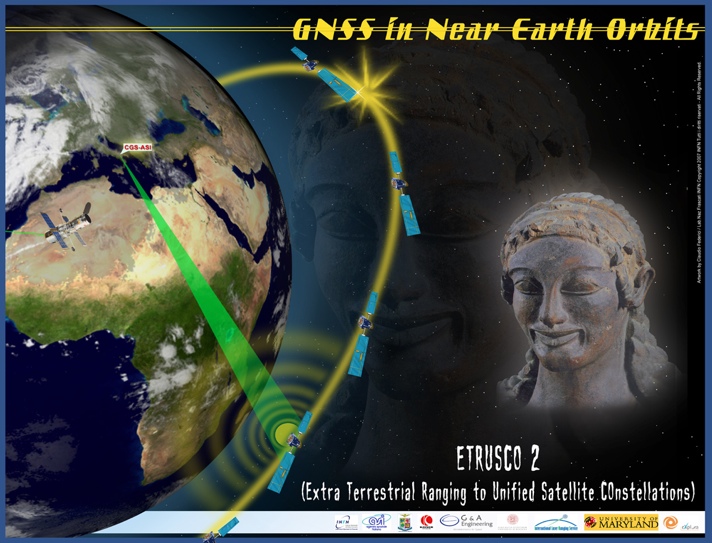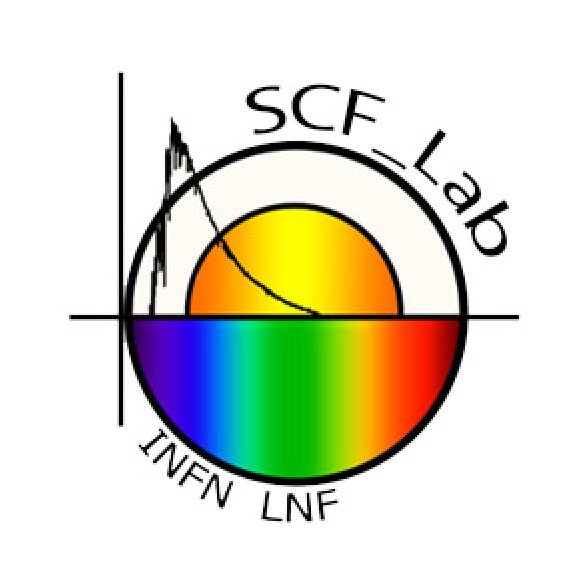ETRUSCO-2

ETRUSCO-2 (Extra Terrestrial Ranging to Unified Satellite COnstellation-2) is a three-year ASI-INFN project of technological development for which INFN is the Prime Contractor. The project acronym affirms the importance of the tight integration (unification) of GNSS and SLR/LLR positioning techniques, for whom an integrated and optimized space segment, as described in the previous chapter, is a fundamental part. It started in 2010 as the natural continuation and evolution of the ETRUSCO experiment. The main purpose of this experiment was the integration of Satellite Laser Ranging with the standard Microwave Ranging to improve the satellite navigation capabilities, by thoroughly characterizing retroreflectors and Laser Retroreflector Arrays (LRAs) in a realistic space environment. It was approved in October 2006 by INFN and it made use of the SCF, an apparatus built specifically by INFN to reproduce space environmental conditions and to test retroreflector payloads.
Moreover INFN developed an industry-standard procedure to qualify the performance of laser retroreflectors for SLR in space conditions accurately simulated in the laboratory: the SCF-Test.
ETRUSCO-2 goal is to optimize the space segment and to integrate GNSS with SLR geodesy techniques. Its primary goal is to design an optimized GNSS Retroreflector Array (GRA) to be deployed on Galileo and GPS3 constellations, to maximize ranging efficiency, to improve signal intensity and to provide pre-launch validation of retroreflectors performance in a realistic space environment, as well as tocharacterize ``as-built'' payloads.
Other purposes of ETRUSCO-2 project are:
- provide general relativity (including the test of the gravitational redshift)
- space geodesy studies
- improving GNSS orbits accuracy
- stability and distribution of International Terrestrial Reference Frame (ITRF) to provide a better definition of its origin and scale
In 2011 INFN-LNF completed the construction of a new Clean Room facility (SCF_Lab) in which the existing SCF has been integrated. Based on the experience matured with the SCF, INFN-LNF, within the project ETRUSCO-2, developed a new apparatus, the SCF-G (Satellite/lunar laser ranging Characterization Facility GNSS) optimized for GNSS, that is now operative in the same laboratory.
ETRUSCO-2 Work Program
- Definition of an improved and enhanced "SCF-Test/Revision-ETRUSCO-2"
- Implementation of advanced and innovative operational procedures for the test of the "GNSS Critical Orbit" (GCO) developed for Galileo IOV [link docs]
- Integration of the Wavefront Fizeau Interferometer (WFI)
- Design and construction of a 2nd OGSE (Optical Ground Support Equipment) optimized for GNSS constellations: SCF-G
- Inherits from SCF, built in part by INFN and in part by SME (G&A Engineering) with INFN supervision and collaboration according to INFN guidelines.
- INFN part includes: state-of art WFI insensitive to vibrations and air turbulence; 2nd new Solar Simulator (SS).
- Integration of SCF-G with SCF_Lab infrastructure.
- Reduced-size prototype GNSS Retroreflector Array built with Hollow technology (GRA-H) according to INFN Guidelines
- Inherits from R&D done with GSFC, built by SME (Kayser Italia) with INFN supervision and collaboration.
- 7 hollow CCRs, 6 on a ring and one in the center.
- Characterized with SCF and thermo-structural modeling
- Full-size prototype GRA for Galileo & GPS-3 built according to INFN guidelines
- Inherits from LAGEOS, built by SME (Kayser Italia) with INFN supervision and collaboration
- 55 CCRs of solid retroreflector technology
- To be characterized with the SCF-G according to the new SCF-Test/Revision-ETRUSCO-2
- Space geodesy study on the SLR of GNSS and gravitational redshift with the SLR of Galileo with ASI CGS and the University of Bologna.
